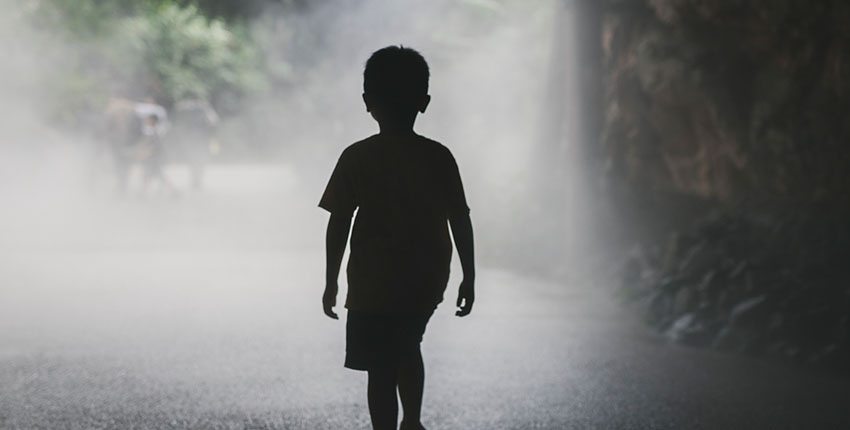
At a glance:
- Restricted access to abortion care may be associated with more children subsequently entering an already overburdened U.S. foster care system according to an analysis of federal- and state-level data.
- Historically, many states were able to restrict access to abortion even before 2022 through targeted regulation of abortion providers (TRAP) laws; these laws decrease abortion volumes by legally limiting the number of abortion-providing facilities.
- Study emphasizes the need to understand the full consequences of restricted abortion access in the wake of the 2022 U.S. Supreme Court decision that effectively overturned Roe v. Wade.
Restricted access to abortion may be associated with more children subsequently entering the U.S. foster care system, according to an analysis of federal- and state-level data by researchers at Harvard Medical School, Beth Israel Deaconess Medical Center, and Bentley University.
Marginalized racial and ethnic communities and financially vulnerable families are particularly at risk, the study indicated.
The team found that fewer children were placed into foster care if they had been conceived in years when abortions were more accessible.
Conversely, the team measured an 11 percent increase in children entering the foster care system if their mothers had undergone the first trimester of pregnancy in a state with abortion restriction laws in place.
Findings are published in JAMA Pediatrics.
The authors emphasized the need to understand the full consequences of restricted abortion access in the wake of the 2022 U.S. Supreme Court decision Dobbs v. Jackson Women’s Health Organization, which effectively overturned Roe v. Wade and ended 50 years of federal protections for abortion care. As of October 2023, 26 states have since enacted laws to ban or restrict abortion access, with 14 states completely banning the procedure.
Today, an estimated 25 million American women of childbearing age, or about one-third of women age 15 to 45, live in areas where abortion care is severely restricted.
While previous studies have illuminated many individual and societal impacts of abortion restrictions, few have looked at foster care. The authors note that the potential relationship is increasingly critical to investigate because more than 4 million U.S. children were placed into foster care between 2000 and 2020.
“With the repeal of Roe v. Wade, and many states already facing overburdened foster care systems, it is important to study the impact that restricted abortion access has on the foster care system to help inform future policy changes,” said senior author Ashley O’Donoghue, HMS instructor in medicine and an economist in the Center for Healthcare Delivery Science at Beth Israel Deaconess.
“Limited access to abortion has significant personal impacts for the mothers and children affected, but also broader national economic and policy-level implications,” O’Donoghue said.
Evolution of access restrictions
Historically, many states were able to restrict access to abortion even before 2022 through targeted regulation of abortion providers (TRAP) laws; these laws decrease abortion volumes by legally limiting the number of abortion-providing facilities.
States’ enforcement of TRAP laws vary, meaning that the severity of their implications may also vary. The study used the presence of a TRAP law as a proxy for abortion access. The authors wrote that since TRAP laws are associated with declines in abortion rates, “we believe it to be an apt proxy.”
To compare the number of children conceived between 1990 and 2011 and placed in foster care between 2000 and 2020 in states with and without TRAP laws, O’Donoghue and colleagues looked at comprehensive on state-level TRAP laws enacted since the 1970s and federal data from the Adoption and Foster Care Analysis and Reporting System.
The team found an overall increase in foster care entries in states with restrictive abortion laws compared to states without them, including a 15 percent increase for Black and racial and ethnic minority children in states with TRAP laws.
The foster care entries were mainly attributable to housing inadequacy, the authors found. Other reasons for placing children in foster care included neglect, parental drug abuse, caregiver inability to cope, physical abuse, and child behavioral problems.
The study did not examine the social determinants of health nor the racialized history of the foster care system.
“Our findings highlight the complex interplay between race, socioeconomic status, and abortion, noting that those who are less able to provide for their children may be the most vulnerable when denied an abortion,” said O’Donoghue.
“The race-specific findings are particularly salient,” she added. “Policies that restrict abortion may contribute to the overrepresentation of racial and ethnic minority children in the foster care system, perpetuating inequities and further straining vulnerable populations.”
When the team compared states with and without TRAP laws a decade before the laws’ enactment, they saw few differences in foster care entries. However, when they compared the same states a decade after the laws were enacted, they saw that the increases in children entering the foster care system persisted.
“The ripple effects are persistent for years after the TRAP law’s passage, resulting in lasting effects on foster care systems,” O’Donoghue said. “Our findings suggest that overturning Roe v. Wade could have significant consequences for the foster care system and beyond in years to come.”
Authorship, funding, disclosures
Co-authors included Noa Talmor, Molly H. White, and Caryn Dutton of Beth Israel Deaconess and corresponding author Savannah Adkins of Bentley University.
This work was not supported by any outside funding.
O’Donoghue serves as a foster care case review volunteer for the Massachusetts Department of Children and Families. Talmor works in the Market Access Strategy Consulting division at IQVIA.


